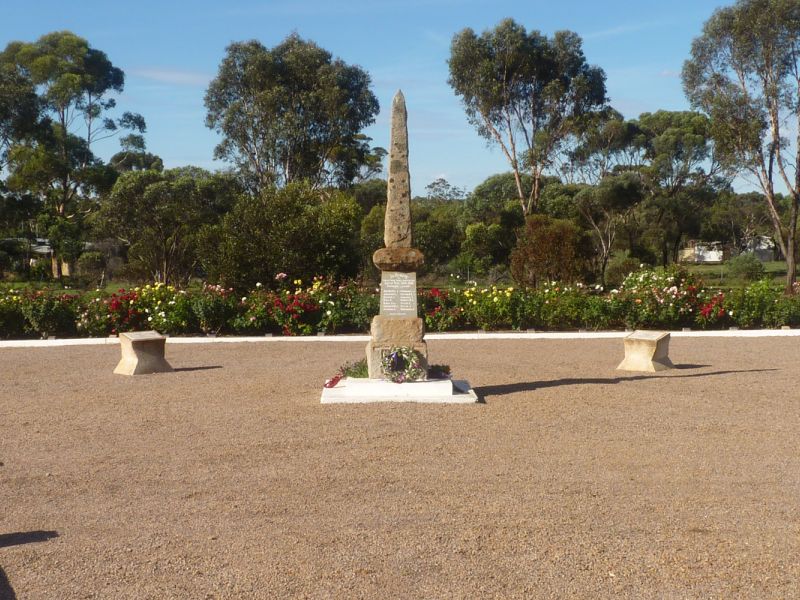William Tough Strachan
William was born on the 15th of May 1879 at Jingellic, New South Wales. He was the second eldest of seven children to Alexander and Mary Frances Georgina (née Roy) of Jingellic. In 1904 William married Annie Rock in Mount Morgan, Western Australia. Their first child, a male, was stillborn in 1904. Stanley followed in 1909 on the 13th of August. Two years later, Stanley’s sister, Hazel was born on the 26th of February. The following other child was also stillborn. In 1913 William and family lived at Ravensthorpe near Kalgoorlie. William was working as a miner on the Kalgoorlie goldfields. Tragedy struck the following year when Annie passed away, although the cause of death is unknown.
William enlisted at the age of 35, on the 13th of February 1915 at Perth in Western Australia. He was allocated the Regimental Number 2040 and placed in the 5th Reinforcements for the 16th Battalion. When he enlisted he sent Stanley and Hazel to live with his parents at Ournie Creek, New South Wales.The 5th Reinforcements embarked at Fremantle on HMAT A20 Hororata on the 26th of April 1915, the day after the landing on Gallipoli. Williams service records show that he joined the 16th Battalion, 4th Brigade of the 4th Australian Division, at Gallipoli on the 28th of July.
Less than two weeks later the 16th Battalion was involved in the Allied August offensive. The 4th Brigade, along with the New Zealand Infantry brigade, The New Zealand Mounted Brigade and the 1st Australian Light Horse Brigade formed the NZA Brigade. Its objective was to capture Sari Bair and Hill 971. The steep and rugged terrain, a night approach march, no navigation and non-existent communications resulted in the Brigade caught in the open in front of Turkish machine gun posts. While the positions were briefly held, the arrival of Turkish reinforcements forced the Brigade back to their starting off positions. At some stage during this encounter, William was wounded in the left shoulder.
He was transferred to HS (Hospital Ship) Georgean and arrived at Lemnos on the 11th of August. On that same day he was admitted to HS Aquitania, his wound being serious enough for him to be sent to hospital in England. William spent nearly three months at the 3rd London General Hospital at Wandsworth while his wound healed. He rejoined his battalion on Gallipoli on the 20th of November, in time for the preparations for the evacuation of the Dardanelles.
After the withdrawal from Gallipoli the battalion returned to Egypt on the 30th of December. While there the AIF expanded and reorganised. Battalions were split to form ‘pup’ battalions. The 16th split and provided experienced soldiers for the 48th Battalion. William remained with the 16th. He received his promotion to Corporal on the 22nd of March 1916. He embarked on HMT Canada at Alexandria on the 1st of June, arriving at the Port of Marseilles eight days later, and joining C Company of the 16th Battalion. The battalion had landed in France three months prior to William arriving. During that time it had participated in its first major action in France at Pozieres.
In the first twelve days of August 1916, the 16th Battalion had 39 killed, 345 wounded and 19 missing in action as they fought in the region between Pozieres and Mouquet Farm. On the 29th of August it was the battalion's turn to make an attack on Mouquet Farm itself. The attack was not successful. During the course of the second half August the 16th had 30 killed, 150 wounded and 51 missing. William was amongst those listed as missing in action, although this was changed to killed in action later in the day. On the night of the 30/31st of August the battalion was relieved by the 47th Battalion of the 12th Australian Infantry Brigade. Due to the sloppy nature of the trenches, the relief was very slow and wasn’t completed until 0500 hours on the morning of the 31st.
Between the 8th of August and 3rd of September, there were nine separate attacks by three Australian Divisions, costing over 11000 casualties, on Mouquet Farm. The British advance eventually bypassed it leaving it an isolated outpost. It inevitably fell on the 27th of September, 1916.
William has no known grave but is remembered on the Villers-Bretonneux Memorial (Australian National Memorial - France) He is also remembered on the Australian War Memorial Roll of Honour, and the Ravensthorpe War Memorial in Western Australia. For his service during the First World War, he was awarded the 1914/15 Star, the British War Medal and the Victory Medal.
 Stephen Learmonth
Stephen Learmonth